
Fresh Cuts: Editing in the Covid-19 Reality
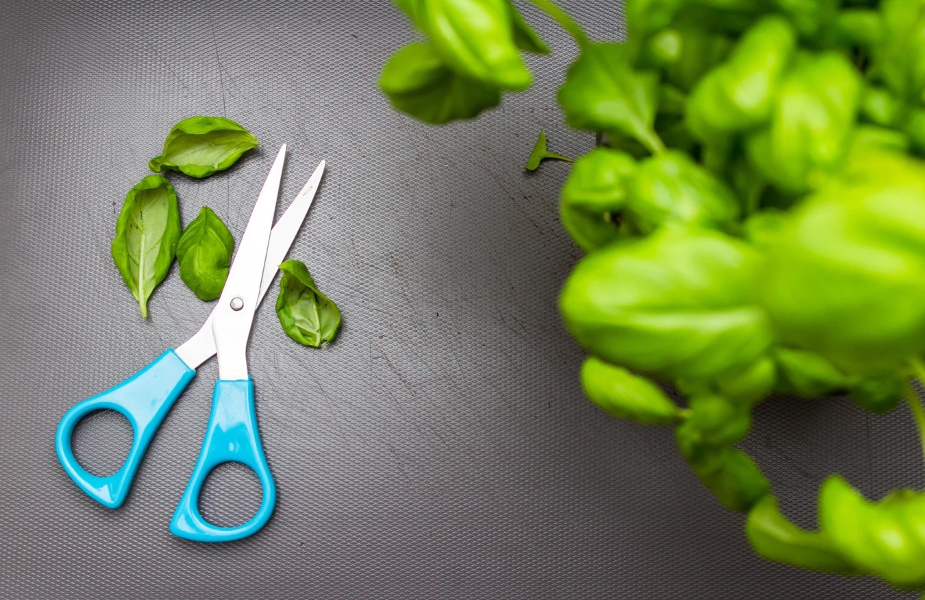
In this time of Covid-19 restriction, cutting together content from archive or stock footage is one way brands can keep creating content. There’s also a lot of self-shot, user generated footage being put to good use right now. The challenge is all in the edit, making sure that the content remains exciting and brand-relevant - and so everyone doesn't start putting out video that all feels similar.
We turned to some of the industry’s most experienced and respected editors to tell us how to approach these jobs in a fresh and creative way.
Sam Sneade
Stitch
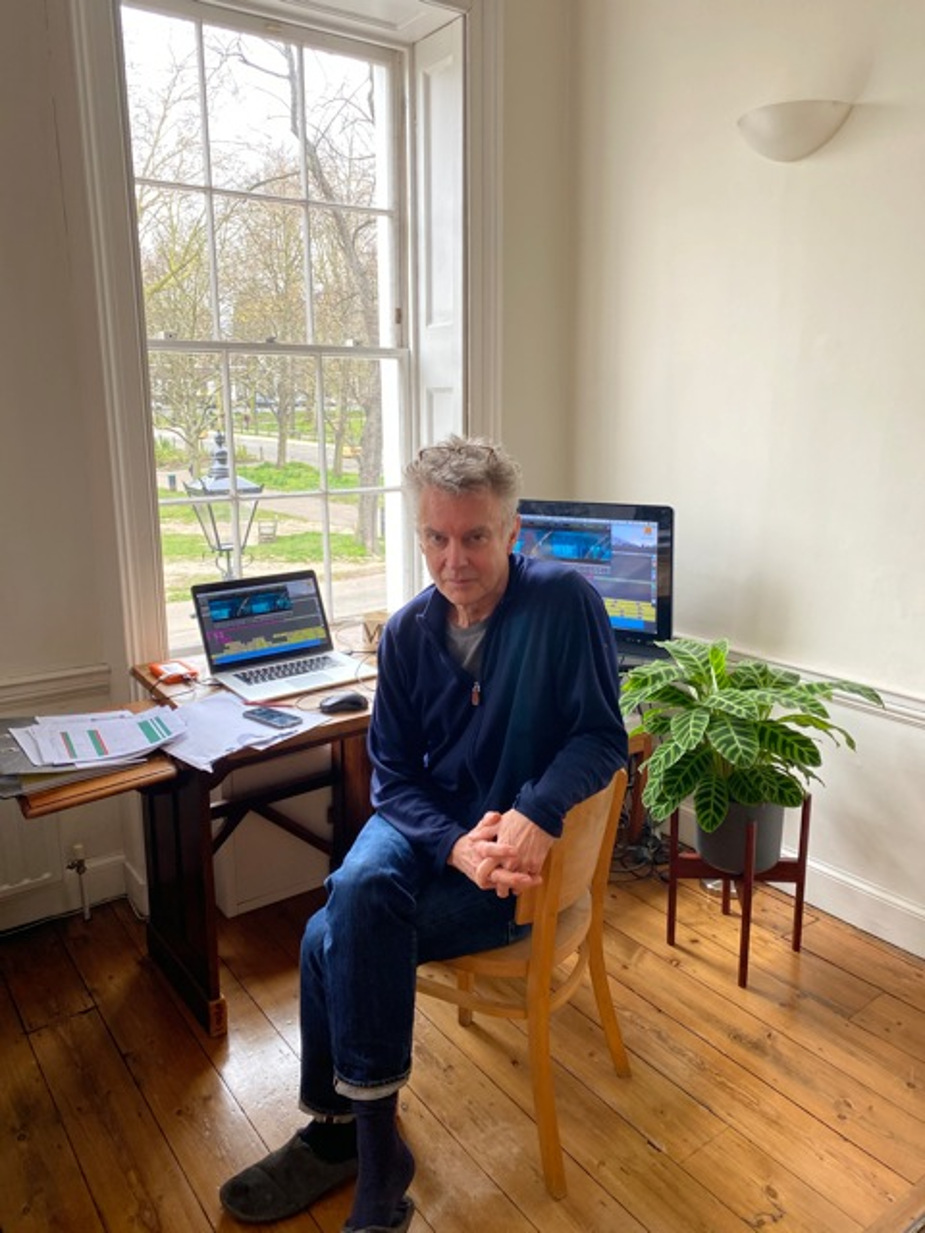
So, what are we to do when 21st Century marketing runs into a 14th century situation? As challenges go this is probably one that planners and agency bosses hadn’t war-gamed. How do you communicate with your market in a shut-down world? Yes we have TV and online content for maybe another six weeks but on a Covid-19 shuttered planet can we risk boring our housebound audiences with the same message again and again? As marketing strategies go it's going to get dangerously close to nagging pretty quickly. The only solution is fresh content; but how to make it when everyone is sequestered at home? One obvious answer is to send for a film editor!
Happily two recent developments provide us with a pass out of this mess; digital filming and full edit suite home capability; the former because it generates, usually, an excess of content that can be happily re-purposed to illustrate fresh narratives and ideas and the latter because it provides a way to edit it remotely. The commercials where this will most readily apply are the sort of lifestyle, documentary-based commercials where, most often, many scenarios have already hit the cutting room floor. Well now’s the time to pick them up, stitch them back together and create something that looks completely new.
To an extent some clients already almost do this. Samsung is a great example, where footage from one job often re-appears in another a couple of years later. At its heart editing is about writing, about controlling the direction of the narrative and, together with the agency creative team, an editor is ideally placed to do this. Those lovingly shot tabletop food shoots for Lurpak and McDonald's, slice 'em dice 'em for what is essentially a new commercial. Car commercials with those miles and miles of driving footage? Again flop it, shuffle it and it's a completely new destination. New music is another device to freshen up an old commercial, as are fresh voiceovers and sound effects. And this is without turning to library and stock footage which opens up whole new vistas of content creation, again not a new technique but one whose time has now come, allowing the wire frame of a creative’s new script to be covered in fresh pictures and hey presto! a brand new TV ad without even going out your front door.
Remember the old Chinese proverb about crisis and opportunity. I can see the prospect of a Covid-19 aesthetic emerging from these times with home-generated content and intelligent use of library/stock footage combining to make something genuinely diverting and entertaining. One key insight I would offer is humour! Now is not the time for overloaded box ticking planner’s strategies, gabbling at the consumer; no, what we need right now is a laugh, and any advertiser who can cheer the nation up is going to be rewarded with an up-tick in sales.
Jay Nelson
Cut+Run US
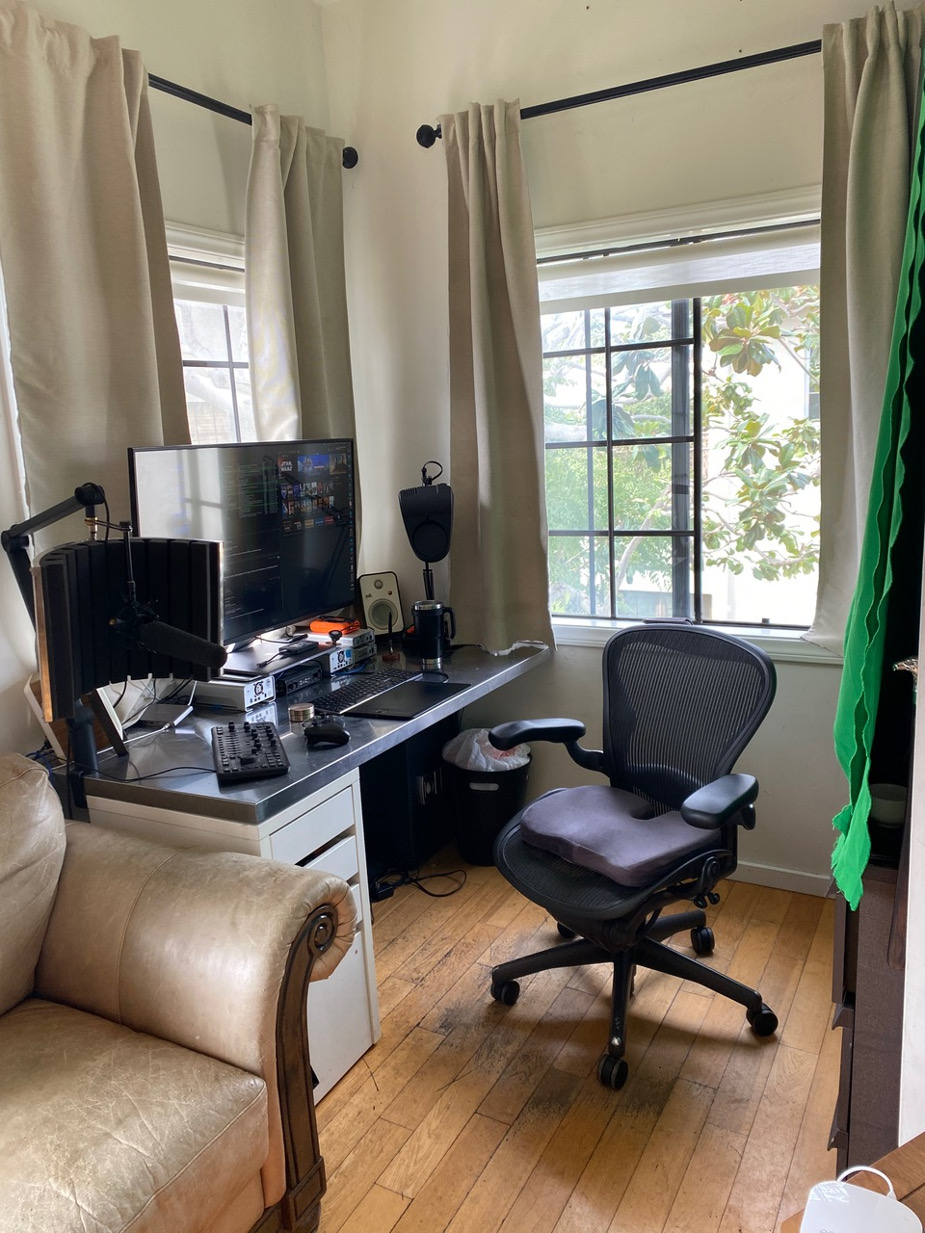
Jay's home edit suite
There’s no assignment more pure than one where an editor must create something from nothing. Well, not really nothing. The assignment is to create something from something, just not the thing the something was originally intended to be. There’s really two types of “something” in this case: Brand-owned, previously used footage now being repurposed—an assignment which usually comes with a stack of guidelines like script, brief, deck, etc; and the sort of assignment where the source media is stock and the possibilities are endless—an assignment made even more vast, the less “brief” there is. In both, my process is governed by the law that everything I view must be seen for an alternative meaning, not what it was originally intended to be. I try and approach imagery by looking for the askew interpretation, a figurative meaning. I deliver on the brief first then drop an A-bomb on expectations with another way of seeing things. Anything less than shock-of-expectation is failed execution. This is an editor’s time to stand naked in the artistic arena, risking failure before a team of Zoom-zapped creatives (who’s reactions are much easier to gauge with the new meeting media btw).
In a stock assignment, even though I didn’t shoot the footage, by making connections and discovering new purposes for imagery I’m creating something that wasn’t there before. With the massive media libraries, to discover great footage ya gotta be able to force searches that produce unexpected, bang-on ideas and for this I enlist random association exercises and the imaginations of the people I work with (there’s little difference between an online and a face-to-face meeting for this sort of thing). You need a whiteboard; collaboration (invite the office rando to conference with the assistant and producer in search of ideas) and any conduit of random association—magazines, thesaurus, Crimes Against Humanity etc. If the subject be Love, say “Water” and seek “love” in whatever pops up. Repeat.
These jobs are often the most rewarding because birthing something from something else is a great way to make creative bonds with people that didn’t exist before.
Alexandra Wood
Flock

There’s a huge opportunity right now for brands to be brave and loose when creating their content. And at this moment in time, I think the most important take-out message from a brand should be that it's honest.
So if you’re considering using archive footage then fully embrace it. If you are lucky enough to have an established brand with a rich archive, draw upon the iconic moments from past campaigns, take things back to the original ideas and ‘crank it up’. Make no attempts at masking old footage to appear new, use the native aspect ratio and analog quality to maintain brand integrity. It is possible to use a mix of footage from multiple campaigns, old and new to create a new piece of work that will function as if it was newly shot. In my experience, a sensitive grade and good sound design will pull it together… Look at it as repurposing vintage gold.
The stock footage route doesn’t necessarily mean the 'second best option’ as there’s a lot you can do with just a few well chosen shots. Again, the important thing is to embrace it. Perhaps it's from a humorous point of view? Use every tired, clichéd stock shot that you can think of - the iris expanding, the baby’s hand clasping a thumb. Or from a macro, global point of view - use the mind-blowing natural, wildlife shots.
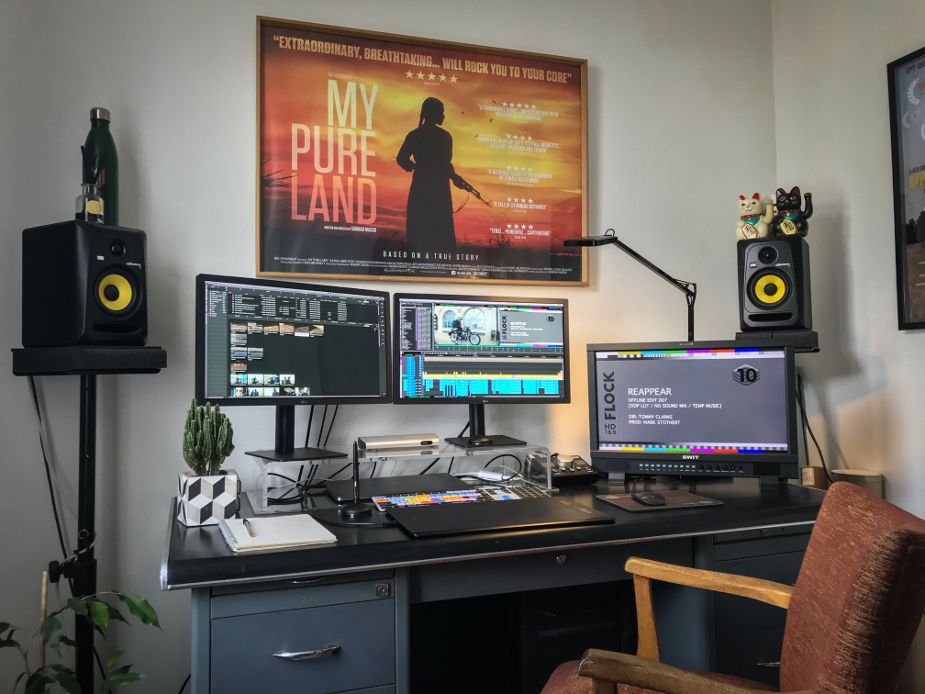
Alexandra's home edit suite
Perhaps now’s the time to start experimenting with mobile phone cameras, user generated footage, Zoom recordings, camcorders, or stills!
Whatever footage you’re using, a good editor will bring out the best in what you have and will always treat the footage with integrity. We’re adaptive creatures and believe me, we’re often tasked with making a lot more out of a lot less! But we can only make solid work from a solid creative basis. Let the good ideas roll!
Jim Helton
Final Cut
First off, I rely on a team of people from the creatives, directors, producers, and assistants to gather as much material as possible. Then there are questions–––what is our point of view, how should this feel, who is this for–––the more questions the better. These questions provide a focus, so that when you watch the footage you have a better idea of what you are looking for.
For example, with The New York Times pieces we wanted scenes that felt experiential, in the moment, a glimpse of the present, sometimes abstract, sometimes a quick read. This really helped us comb through hours and hours of footage and identify what would actually work. For example, we had about 10 hours of footage from the Galapagos that had been shot for a photojournalist's own documentary work. It was beautiful stuff but most of it didn’t work for our concept. However, knowing the concept and having a strong sense of our criteria, I could go through that footage and find the bits that would indeed work best for the spot.
Creating a framework for what you are looking for, the type of feel that you are looking for, maybe the light you are looking for, or even performance–––all these considerations and more go into finding something fresh and appropriate for not only a stock or archival piece but any piece. Viewing footage–––regardless of whether it was shot specifically for a spot or whether it is “found”–––benefits from thoughtful parameters.
Izzy Ehrlich
School Editing
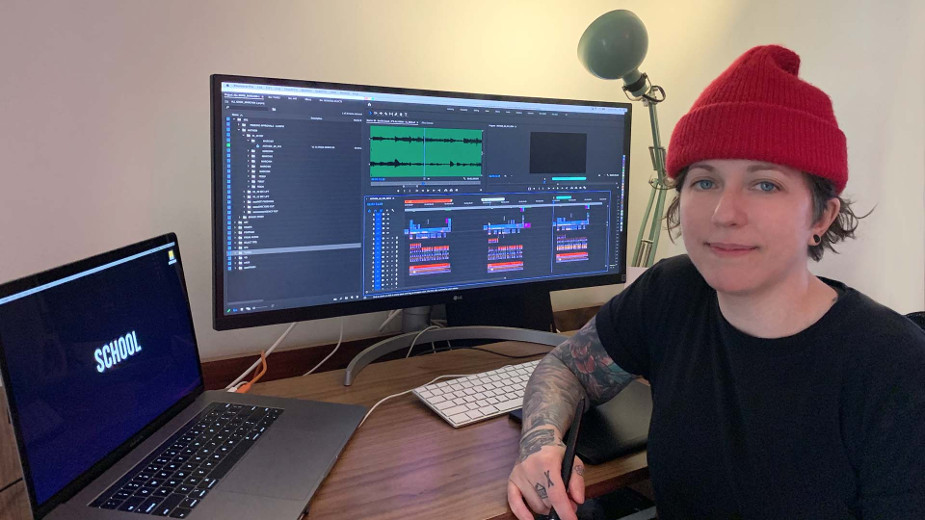
This is a really devastating time for everyone, but it's also an interesting time because without the ability to shoot, we are all in the same boat. It means we're going to have to get creative with stock and found footage but it can also be very challenging. When you're searching it can be a really lengthy process. You have to be really thoughtful and creative with your word search to find what you need. There are lots of great stock footage resources out there if you have the budget. The trick is to find footage that looks like it was professionally-shot but isn't a visual cliché. It's challenging though. A lot of it is over-lit and flat-looking. It just doesn't look high-quality, so it forces you to think outside the box. If you want a certain shot, you may have to look for a different shot that says the same thing.
My Nova Scotia Tourism campaign out of DDB Canada is a good example of creating something out of found and stock footage. I was thrilled that it won at the 2017 AICE Awards for Best Regional Campaign...we actually had people asking us who the director and cinematographer was! On that job, I was challenged by having an over-abundance of footage. Every day a four-terabyte drive would show up. I was selecting from morning until the wee hours of the night, every day for two and a half weeks, always looking for that needle in a haystack. That's the joy of the search. You just never know what you're going to get. It can be tedious going through footage, but it's all about the organisation upfront. I was starting to see patterns and shapes in the footage, and camera movements. By the time I got to cutting the spot, it was already cut in my head.
Today, the challenge with everyone working from found footage is the risk that everything looks the same. I mean, agency creatives have a really hard job right now. People aren't able to just go out and buy things - it's hard enough just getting the basic necessities at the grocery store. So maybe the next wave of creative ideas means we have to rethink how we are advertising and gear it more towards making connections with people, building bridges to their brands. I think super smart ideas will always stand out.
I did a Volkswagen spot for Taxi called ‘Lead the Way’. It was originally a comedy commercial that was done in the States. Only about 25% of the footage was usable from the original but we managed to make it into an abstract visual spot. I would say to creatives, don't be afraid to go into the archives because you never know what you can find, and how you can repurpose that footage. Footage can come from anywhere, but when it's married to a great idea, that really gets people's attention.
These are all sustainable creative solutions to an overwhelming situation. Life after Covid-19 is actually a really exciting notion because my talented creative and production friends are spending this time brainstorming new ideas and concepts. When the constraints of Covid-19 are lifted, I think we're going to see a new wave of creativity and passion hitting the industry.
Julian Tranquille
Cut+Run London

Jules at home
I love creating stories from stock footage. It's a real challenge - like creating a puzzle using pieces that start off not quite fitting.
For me the process begins with receiving what can be vast amounts of footage which I go through looking for any nuggets that will work for the narrative. It's quick at first - fast scrolling through the footage making selects that would fit against a particular dialogue or idea. A few passes later, and as the timeline gaps start to fill and the puzzle comes together, there will be a bit of back and forth with the creatives and the researchers to strengthen the footage that isn't telling the story strong enough - this is the beauty with using the stock footage format - it can be unlimited as to what you can do. It's also this time of the process that perhaps takes the longest - the refining- and quite often by this stage because I know exactly what I'm looking for, I will try and source ideas myself.
It's great when you find a clip that works off a music vocal or VO line that visualises it in a way that isn't the plain and obvious way, but that juxtaposes, even opposes in a way which simply works - you just feel it. Contradiction and metaphors. Like in the 'It's Not Easy Being Green' spot for EDF Energy, we had to find clips that visualised the song vocals as well as the all-important VO - it was a delicate balance of not being too literal, but at the same time keeping it clear and as quirky as possible. We even manipulated some clips to suit, like playing some clips backwards.
Another one I enjoyed working on - the Buttercup cough syrup spot - needed a slightly different approach. The script was animals coughing, then saying 'buttercup' to each other. Who doesn't like talking animals? There was a lot of footage available around the subject matter and therefore many options, so adding a bit of improv in the dialogue was something we were able to experiment with in the edit including the reprise - it still makes me chuckle every time I see it!
But a favourite use of using stock footage I've seen is a film by director Osbert Parker for the WWF. It's a great example of the juxtaposition of mankind's contribution to the Earth's destruction against the musical backdrop of the classic 'Wonderful World' by Louis Armstrong- If you listen to it on mute, every shot builds on from the last, and with the music every shot is timed perfectly against the vocals which makes an impactful piece of film.
Heidi Black
Whitehouse Post

Heidi's home edit suite
Working with user-generated content (UGC) and stock footage is the ultimate collaboration. You’re writing, directing, and cutting a piece as a team, all at once. Going in, you need to know exactly what you want to say, but also need to be completely open minded about how you’re going to say it. You don’t create your characters as much as discover them in the real world. And you have to be willing to let them lead you. The risk can be great, but the reward is an authenticity that viewers crave.
Google was an early adopter of using UGC to showcase how people use the platform in a meaningful way. When I cut It Gets Better for Google Chrome, we started with Dan Savage’s original YouTube video. We then spent weeks combing YouTube, watching messages from real people who were moved to post their own It Gets Better videos. I remember when we found one of a young guy propped up in bed in front of twisted Venetian blinds, starting with “OK little ones, here’s the first thing you need to know…” and boom there it was. The sweetness and intimacy that even the best copywriting could never recreate. It wasn’t a pretty shot, but it was the right shot. It encouraged us to keep looking for those truthful moments that would help us craft our message.
Give yourself permission to explore as many avenues as you can without being disappointed if they don’t pan out. There is a world of material at your fingertips. Consider that somewhere out there is an unexpected, potentially counter intuitive, perfect way to express your message. Embrace serendipity and intuition. The trick is to give yourself enough time to look for those needles in the haystacks, but to also be strong enough to stop and say “this is it.”
Catherine Bull
Spot Welders
One way to make stock footage fresh is to personalise it. For example, I cut a 60-second spot for Jeep, directed by Jake Scott, where we took archival footage from decades of popular culture and comped Jeeps driving through each scene. This way you can take stock footage and tailor it to the brand and the message, and if you don't have the resources to do a full CGI approach, you could incorporate animation. This job was so fun to edit - everyone was brainstorming different scenarios we could incorporate (one that didn't get used that I pushed hard for was when Terry Fox ran across Canada to raise awareness for cancer research - such an iconic event from my childhood), and we plastered the walls of our edit room with different printouts from each decade, playing with so many different stories we could tell. It's one of my favourite projects I've ever worked on:
Matthew Felstead
Big Chop
As we get further into isolation and pre-Covid jobs wrap, agencies and creatives will be faced with the conundrum of how - and what - they can do to maintain creativity for their clients.
People may opt for isolation improvisations, like Channel 4’s latest ident for The Steph Show, but in most cases, maintaining workflow will likely take the form of re-visiting previous spots or creating new content from stock footage.
As an editor, what I can accomplish story-wise is governed by the script/brief/footage I receive. The simplest and quickest solutions for agencies in the current climate would be the re-cutting of previous films to shorter lengths, or adapting the story slightly to reinvent the idea.
I have been doing this over the last week, adapting and re-working previous commercials into a series of idents, which has involved revisiting existing rushes to fit the agencies’ new brief and seeing what alternative stories I can generate. It’s an interesting discipline, ignoring the original script and building new conversations and narratives.
There is also the option of producing something totally new from stock or archive footage. There has been a noticeable improvement in the quality of this footage in recent years and it’s no longer the staid and sterile affair it used to be. This route is a more time-consuming affair, requiring lots of stock site research to source footage of equal quality that could be graded to look like one seamless film.
Not an easy task by any means. But Eric Thayne has managed it well. It feels like one set of rushes and proves that, in the right hands, stock footage can be used effectively. From an editing perspective, the way in which you approach stock footage should be exactly the same way in which you approach any edit. Obviously, the amount of rushes you have to work with will be greatly reduced, but given the right imagery, I see no reason why we can’t adapt to this new alternative.
If there’s anything to be learnt from the current situation, it is that now, more than ever, we need to utilise all aspects of the process, marrying them together to create work that is not only engaging, but also relevant to the position we find ourselves in. Who knows-we may come out of this with new and interesting creative processes and possibilities.
Necessity is the mother of invention!
Joe McNally
Gramercy Park Studios London
In both our London and New York hubs, we’ve already completed a number of projects utilising stock and archive footage as a solution, either wholly or in part. But from an editor’s point of view, I’m not looking at footage as ‘stock’ – I’m looking at it as another shot, another piece of the puzzle, that tells the story and brings the concept to life, much the same as any custom footage we are supplied during a project. Therefore the biggest change is that we’re working remotely from the team, be it a director or the agency.
Vee Pinot
Gramercy Park Studios New York
When we’re working with stock or archive footage, especially at this point in time when the role of a traditional director and DoP is somewhat lessened, the first step is to work with a really good picture researcher. Someone who understands the emotion behind the brief, the style and the brand. Our job is then to craft that footage in much the same way that we would do on any other job. Of course, we’re working remotely so we need to ensure we’re really communicating with the agency all the time and that everyone is on the same page, and I think the talent of an editor really comes into its own in this situation. You’ve got to trust your editor to use all of their experience and know how to get the spot to a place that takes the project beyond just a series of unrelated shots.
This is where the brief is really important. We’re finding that agencies and clients are looking for work that’s much more personal. That’s more about connecting with you home, family, and self, in a different way. Brands are looking for work that’s real and relatable, that looks at societal well-being and that offers solutions and doesn’t just chase sales in what are very difficult times.
Joe McNally
Of course, we’re working closely with our grading and VFX teams to add their magic on any stock footage that needs to be more on brand, or that needs to have elements added or removed. So we need to utilise all of the resources at our disposal, including the sound team, to really bring these spots to life.
It’s also worth remembering, that there’s still content being shot. There’s a wealth of people out there still creating, be it user generated content from social channels, or self-shooters and directors who are utilising their skills to respond to briefs from home. Some of our flame artists and photographers also have their own mini home studios, so we can tap in to that resource, for things like pack shots, that can really give each spot a bespoke feeling.
But collaboration, creativity and trust from our clients and partners has never been so important.
Christjan Jordan
The Den Editorial

Christjan's home edit suite
Who ever thought we would be opening an editing company in times like these, not us!
With brands repurposing archival work and shifting to using stock footage, animation, and user generated footage for their commercials, it’s now more than ever that there is a need for an experienced editor.
Creativity is key. Everything I work on has its own unique challenges and requires creative thinking. When working with found footage there is an endless amount of it out there and it takes self-discipline to find the best path, because it’s way too easy to go down twenty paths. It’s often a hunt until the deadline to find (or create) the best footage to support the idea.
I just worked with some great creatives at Pereira O’Dell on a commercial using found footage and the process was super collaborative. We all worked in real time over our remote system to find the narrative and the images to support it. It’s the same agency/editor workflow that has always existed in the editing room, but this felt more communal. Probably because we are all in this together.
It might be obvious, but even with us staying home, creators still can create. We can still make great commercials. Directors can bring their visions to a concept and editors can still edit together something impactful. There are amazing opportunities to connect with our audiences and to tell great stories despite our current limitations. I’m inspired by Jimmy Fallon’s homemade Tonight Show and John Krasinski’s Some Good News. I go into the future with a positive outlook and excited for what challenges are coming next.
“My wife forced me to take this picture. I think it’s a good ad for Zevia, Lacie Rugged Hard Drives, and energy crystals.”
Peter Zachwieja
Cutters Studios
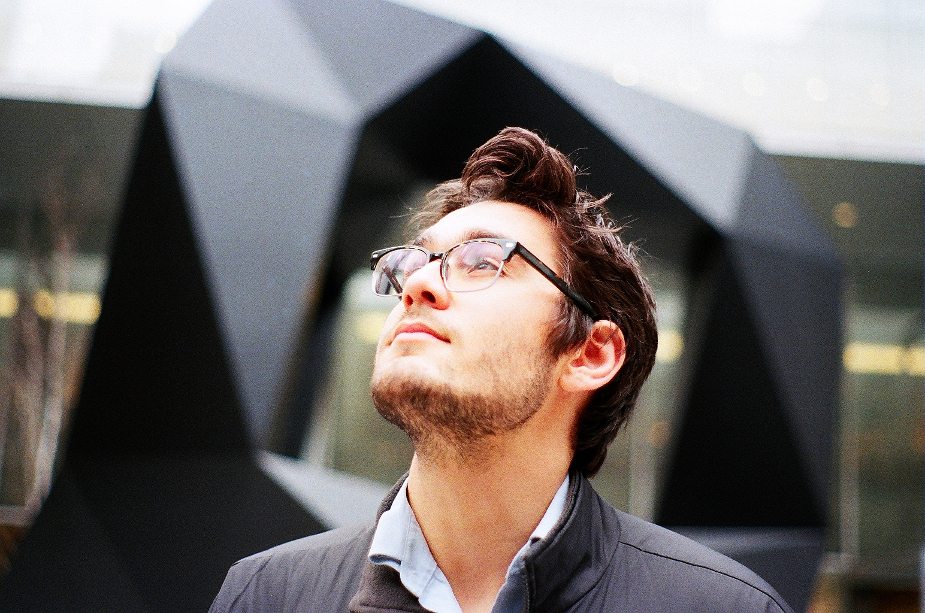
As productions around the world come to a halt and agencies and editors alike are forced to reevaluate their approaches to storytelling, the ability to tell compelling stories through pre-existing footage has become more important than ever. Over the years, I've had the opportunity to work on a number of projects consisting heavily or entirely of stock footage. Through trial and error, I've learned which workflows enable effective storytelling, and which tend to fall flat.
My approach to these projects is almost exactly the same as my approach to found footage or archival documentary. I'm rarely looking for the shot that best fits the voice-over. In fact that "perfect shot" usually doesn't even exist. Maybe the lighting is wrong, perhaps the angle is off, or you find yourself wondering if anyone will truly notice if the actor changes between shots. While these "close-enoughs" may match the script and storyboard precisely, they will likely string together into a clunky, disjointed edit sacrificing heart for see-say. I instead try to let the footage tell its own story. By exploring subtle connections between visuals and language and attempting to evoke, rather than show, edits are able to take on a life of their own. The intermittent use of abstract and tangential footage helps create a connection with the viewer, not through explicit understanding, but through feeling.
Stock footage shines when it's allowed to be more than the sum of its parts, when the shots are more than a reiteration of the words that they accompany, and when they connect the viewer not just to a visual, but to a feeling. It's the difference between words and poetry.
Kevin Garcia
Cosmo Street
It is a crazy time out there and those of us that are still working are very lucky. Right now there is a rush to get out messaging about this crisis with the tools we have available. As editors, we are first and foremost storytellers and we don’t need a big budget shoot to accomplish that. As production is frozen, brands still need to create content in more unconventional ways. We are seeing a lot of UGC (User Generated Content), some even filmed in vertical, which used to be a big no-no. With the ease of users uploading content, I can literally sit at home all day downloading clips and cutting spots that people filmed on their phones at home. We can then get on a video conference and still discuss and collaborate with the agency. We are also seeing brands using stock footage or even stills to tell their story. We have always done a lot of work like this especially in pitches and mood videos that we cut for agencies. There is tons of amazing footage out there and we dig really deep to find just the right shots. Since we are all working from home, we are quick to adapt and turn around spots from concept to delivery in record time. We have been cutting spots that go straight to air the next day. It is definitely a time to let our clients know that we are a big resource for them to keep advertising going, while production is frozen, and the world is full of uncertainty. Stay positive, stay creative and stay healthy.
James Norris
Nomad Edit
Like any edit job, knowing the footage inside and out is key, never more so when you have vast libraries of material to choose from. Watching and soaking it all up, then creating the sparks of a story, with stock and archive, that story can work on many different levels. A traditional narrative, a visual narrative, juxtaposing opposites, similarities...there's so much freedom in where you can go and these possibilities can grow and grow. With all the different sources of material out there, perhaps more than ever with this type of editing it's important to go with your gut, and let your taste lead and find something unique within each shot, but also within the film as a whole, give it it's own personality and concept. The individual shots need to work together, to be a film, whether they have something subtly in common, similar movement, similar lighting, or perhaps perversely the shots are exact opposites. You can invent a visual language for that film, so you don't end up making the generic, bland brand millennial library stock ad, where it is all about being unique and different but the film is anything but.












